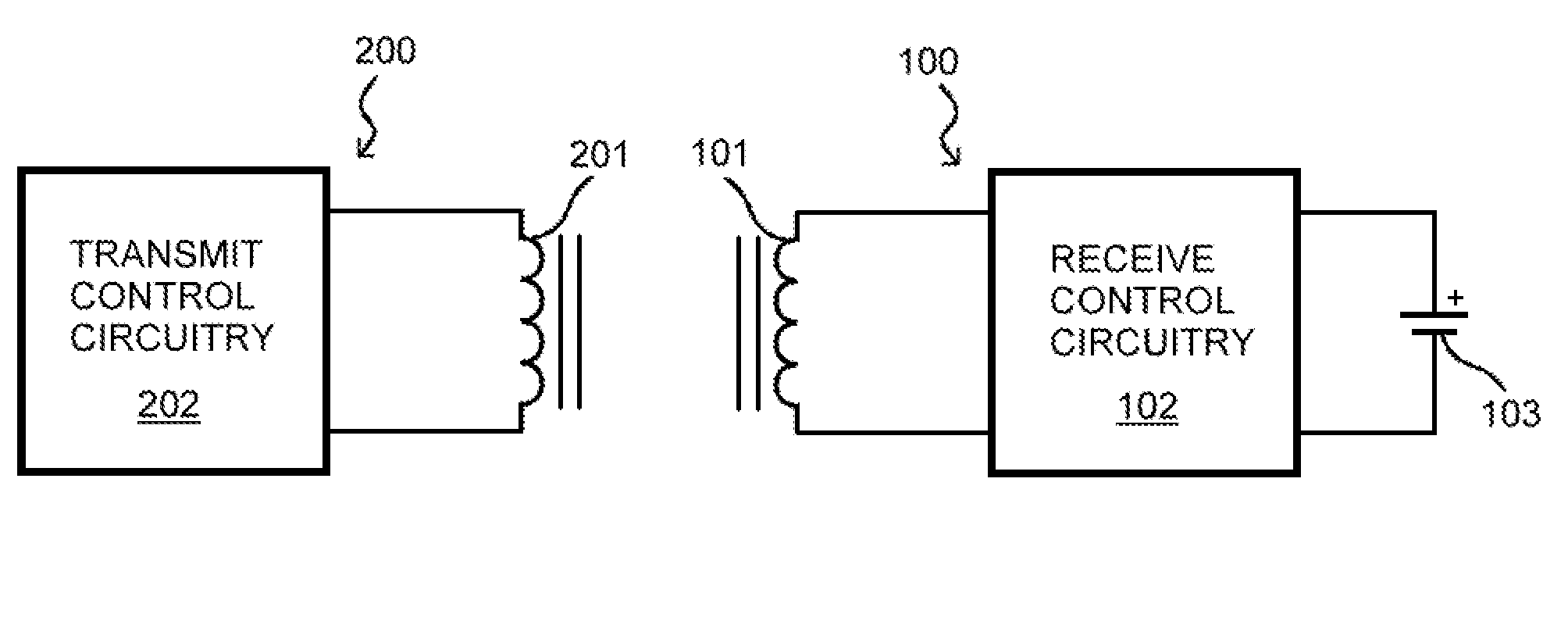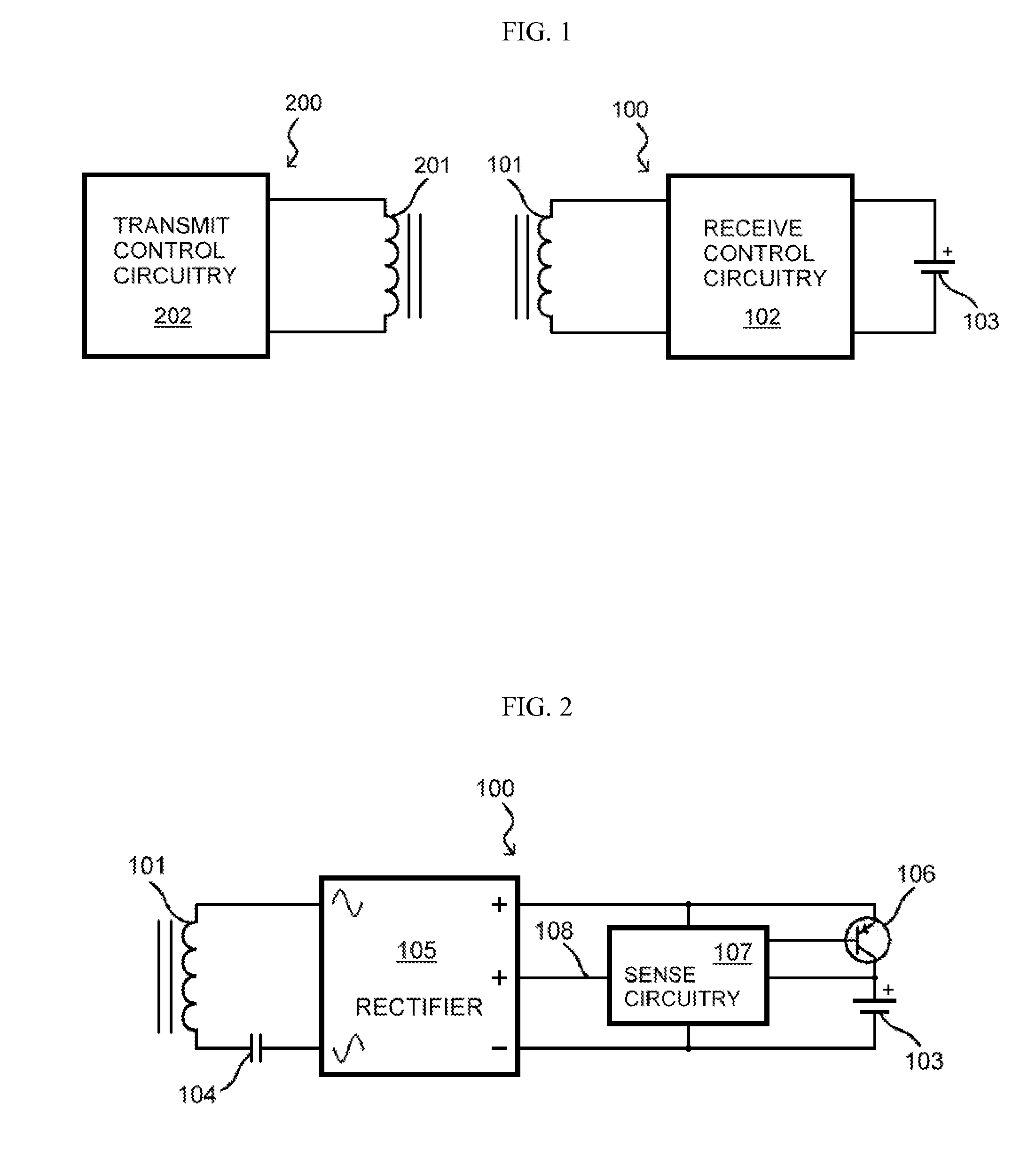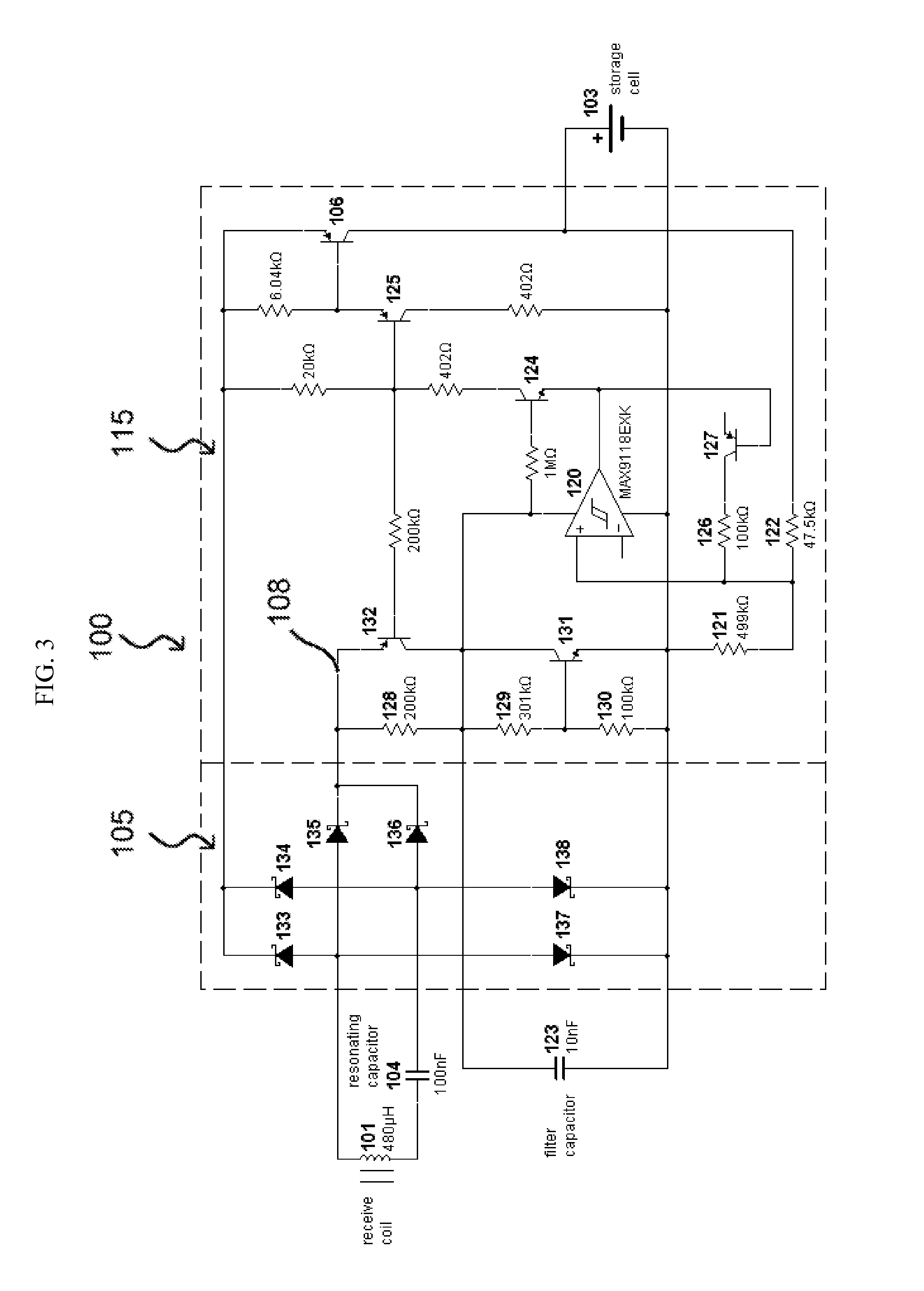Magnetically Coupled Battery Charging System
a battery charging and magnetic coupling technology, applied in electric vehicles, electric power, transportation and packaging, etc., can solve problems such as difficulty, reducing power transfer efficiency, and unable to achieve tight magnetic coupling
- Summary
- Abstract
- Description
- Claims
- Application Information
AI Technical Summary
Benefits of technology
Problems solved by technology
Method used
Image
Examples
Embodiment Construction
)
[0138]Embodiments of the present technology relate to systems and methods for inductively charging batteries. While certain embodiments are described in detail, the present inventions are not limited to such embodiments, rather, one skilled in the art will understand that the teachings herein are applicable to many types of battery powered devices that can benefit from the inductive charging systems and methods disclosed herein.
[0139]Referring to FIG. 1, a basic magnetically coupled battery charging system comprises transmit circuitry 200 and rechargeable battery assembly 100. Transmit circuitry 200 includes transmit (primary) coil 201 driven by transmit control circuitry 202, which produces an alternating current in coil 201. A portion of the magnetic field responsively generated by transmit coil 201 couples to receive (secondary) coil 101. The induced current in coil 101 passes through receive control circuitry 102 on the way to storage cell 103. Together, receive coil 101 and re...
PUM
 Login to View More
Login to View More Abstract
Description
Claims
Application Information
 Login to View More
Login to View More - R&D
- Intellectual Property
- Life Sciences
- Materials
- Tech Scout
- Unparalleled Data Quality
- Higher Quality Content
- 60% Fewer Hallucinations
Browse by: Latest US Patents, China's latest patents, Technical Efficacy Thesaurus, Application Domain, Technology Topic, Popular Technical Reports.
© 2025 PatSnap. All rights reserved.Legal|Privacy policy|Modern Slavery Act Transparency Statement|Sitemap|About US| Contact US: help@patsnap.com



